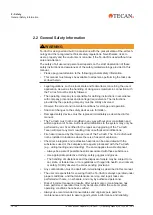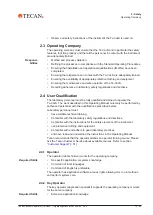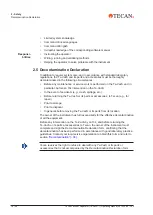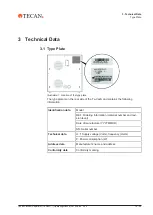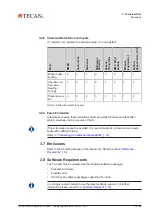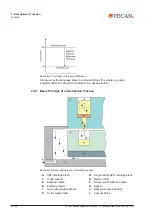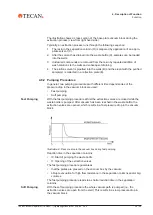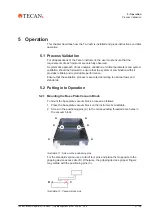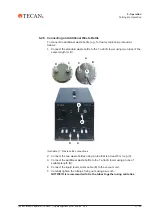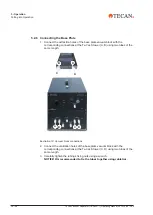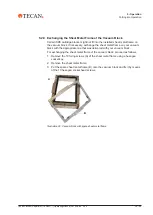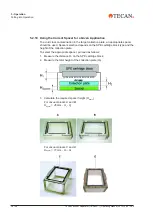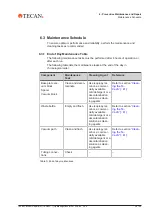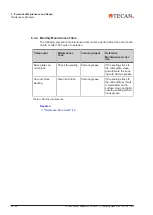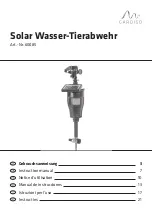
4 - Description of Function
Function
Tecan Vacuum Separator (Te-VacS™) Operating Manual, 391236, en, V4.0
25 / 54
The illustration shows a cross section of the base plate vacuum block during the
extraction process (view from right hand side).
Typically, an extraction process runs through the following sequence:
1.
The resin in the separation column (D) is prepared by application of an appro-
priate solvent (C).
2.
After the solvent has drained into the waste bottle (K), samples can be loaded
into the wells.
3.
Undesired compounds are removed from the resin by repeated addition of
wash solutions to the wells and subsequent draining.
4.
The elution solvent is pipetted into the wells (B) and the eluant with the purified
sample(s) is collected in a collection plate (E).
4.8.2 Pumping Procedures
In general, two pumping procedures with different time dependencies of the
pressure drop in the vacuum block are used:
•
Fast pumping
•
Soft pumping
Fast Pumping
With the fast pumping procedure at first the extraction valves are closed while the
waste bottle is pumped. After vacuum has been reached in the waste bottle, the
extraction valves are opened, which results in a fast pressure drop in the vacuum
block.
Illustration 9:
Pressure drop in the vacuum box during fast pumping
Reaction time in the separation columns:
•
t0: Start of pumping the waste bottle
•
t1: Opening of the extraction valves
The fast pumping procedure guarantees
•
that the plates are pressed on the vacuum box by the vacuum,
•
abrupt evacuation for high flow resistance in the separation columns and/or big
volumes.
The fast pumping procedure leads to a shorter reaction time in the separation
columns.
Soft Pumping
With the soft pumping procedure the whole vacuum path is pumped (i.e., the
extraction valves are open from the start). This results in a slow pressure drop in
the vacuum block.


